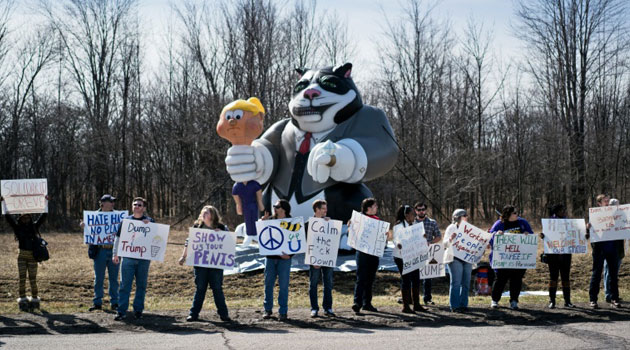
Protesters gather across the street before a Trump rally at the International Exposition Center March 12, 2016 in Cleveland, Ohio/AFP
WASHINGTON, United States, Mar 15 – In America, these are days of rage, fueled by a cocktail of gripes making for a White House race that’s been wild and raunchy.
Fist fights between opposing sides are now breaking out at rallies, where people give each other the finger. Candidates openly call each other liars, among other insults. Accusations of racism and bigotry have tainted the campaign trail.
One hopeful – brash Republican frontrunner Donald Trump, of course – has even boasted in veiled fashion about the size of his genitalia.
“This would all be fun if it weren’t so serious,” said Patrick Haney, a professor of political science at Miami University of Ohio.
Thanks in part to the gnawing sensation that the so-called “American dream” – the idea that if you work hard, you will get ahead – is dead or comatose, it is the year of the outsider: the candidate claiming to be utterly free of the dysfunction of Washington-style, nothing-gets-done politics.
“There is a sort of fundamental level of irritability in the American electorate right now. Some of it is probably economic and some of it is social and cultural,” said Haney.
Paul Beck, a political scientist at Ohio State University, said the national funk cuts across party lines and to some extent stems from dissatisfaction with the status quo.
READ: Defiant Trump stares down protesters after rally violence
“The other thing is much more deeply seated and that really goes back decades, to the declining status of the middle class,” Beck told AFP.
Expressed in numbers, it looks like this: in 1970, 62 percent of aggregate US income went to middle-income households. But in 2014, that figure was down to 43 percent, according to the Pew Research Center.
This means the other ends of the income spectrum – the poor and the rich – are getting bigger.









































